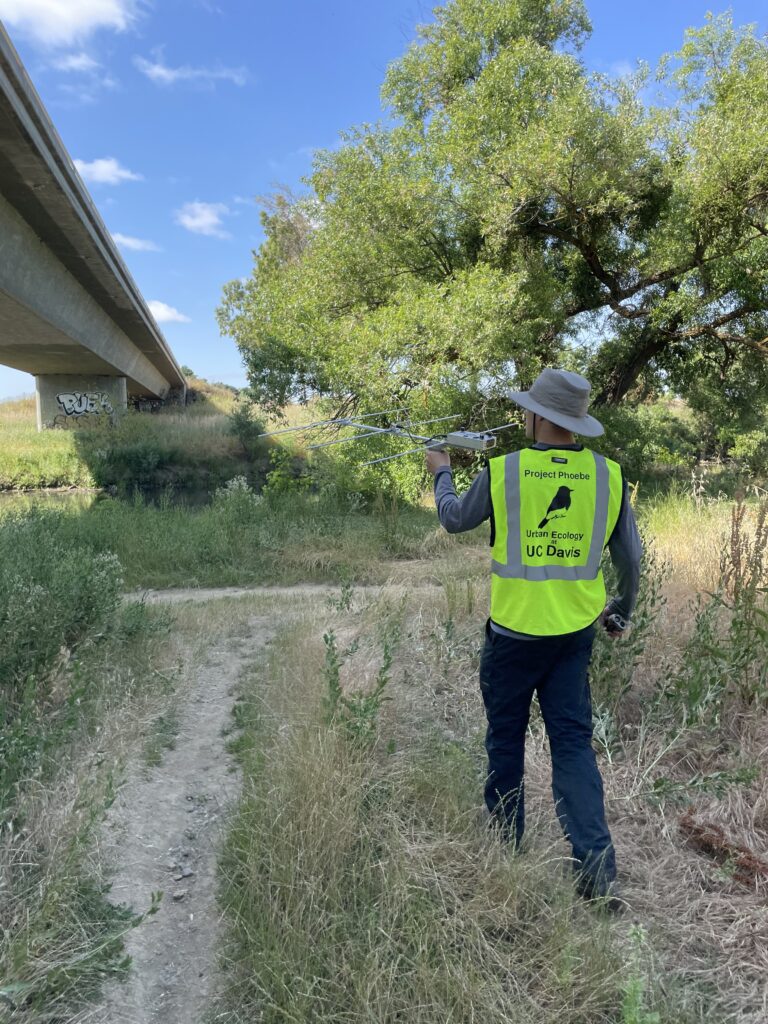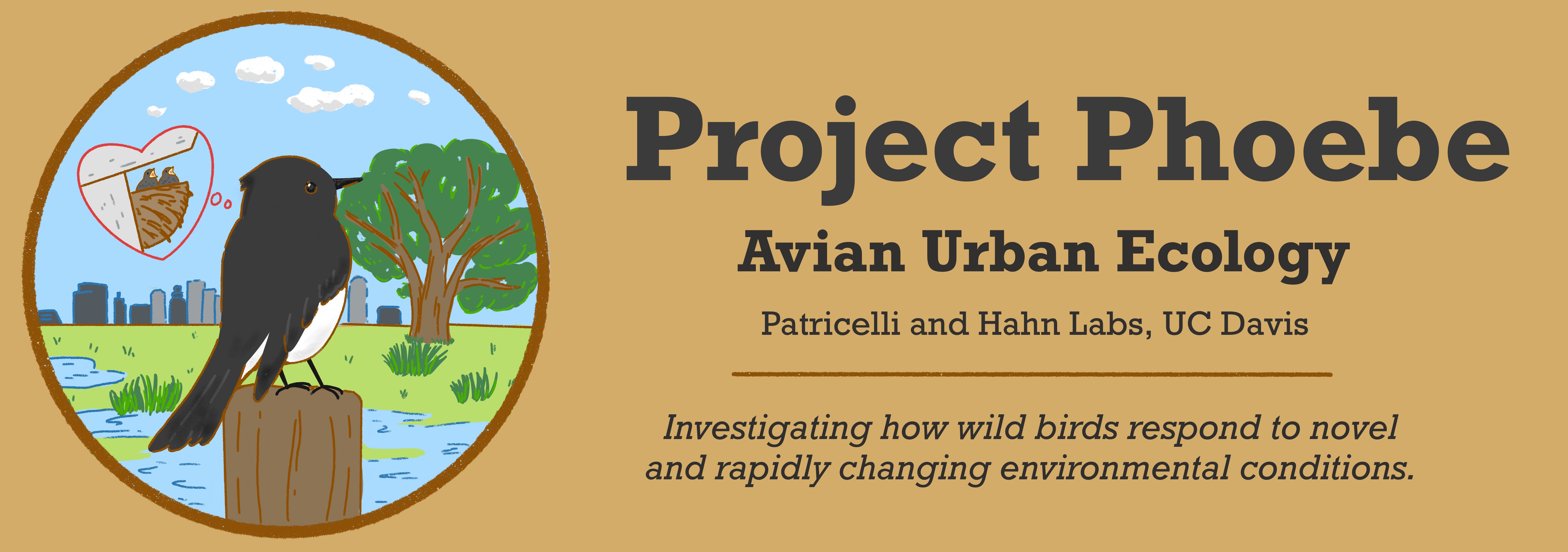Phoebe Behavior Observations in Full Swing
Project Phoebe is about three months into its first field season. Adorable baby Phoebes have fledged (left the nest) at a handful of our nests, and some parents have already laid a second round of eggs! Other Phoebe pairs are just laying their first round of eggs.
To better understand how city life affects Phoebe behavior and reproduction, the Project Phoebe team carries out several observations of the parents’ behavior at each of our nests. We record videos of parents visiting their nest, allowing us to assess how factors like temperature and exposure to pollutants affect the quantity and quality of care parents provide to their young.
At some of our nests, we secure tiny radio transmitter tags on one of the Phoebe parents–these fit like miniature bird backpacks and transmit radio signals at a certain frequency! We then use a receiver and antenna to locate the bird and follow them while they forage. The receiver is tuned to the frequency of the transmitter tag on the bird, and when the receiver is pointed at the tag, signals from the tag are transformed into a beeping sound. You can learn more about this technique, called radio telemetry, here. Foraging observations aided by radio telemetry help scientists understand things such as how far animals travel from their nests and what types of habitat they use.
Keep an eye out for our tagged Phoebes as you walk along Putah Creek!
– Sage


